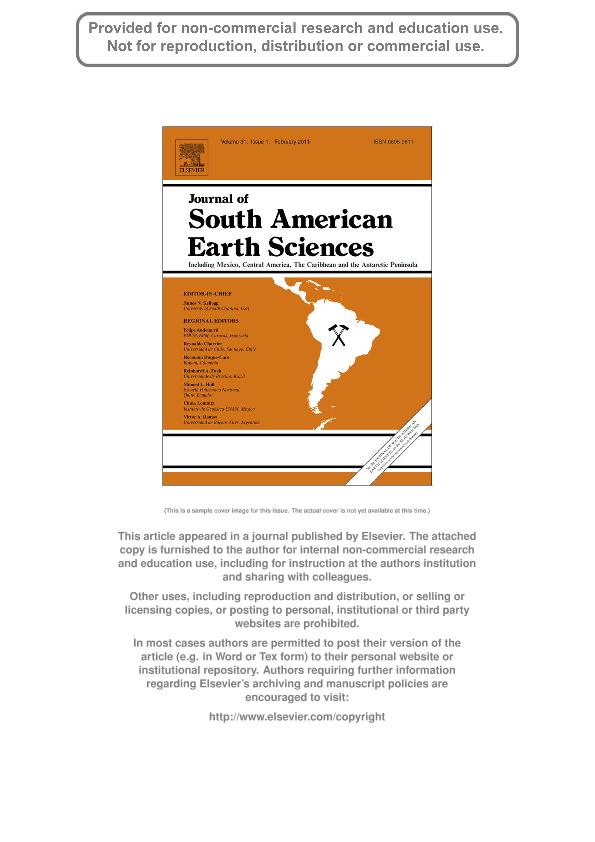Artículo
Late Pliocene Glyptodontinae (Xenarthra, Cingulata, Glyptodontidae) of South and North America: Morphology and paleobiogeographical implications in the GABI
Fecha de publicación:
03/2011
Editorial:
Pergamon-Elsevier Science Ltd
Revista:
Journal of South American Earth Sciences
ISSN:
0895-9811
Idioma:
Inglés
Tipo de recurso:
Artículo publicado
Clasificación temática:
Resumen
Knowledge of the main aspects of the Great American Biotic Interchange (GABI) concerning the glyptodontine Glyptodontidae (Xenarthra) is very scarce. A bidirectional dispersal processwas recently proposed for this clade, with the presence of the North American genus Glyptotherium Osborn recognized in latest Pleistocene sediments of northern South America (Venezuela and Brazil). However, the earliest stages of this paleobiogeographical process remain poorly understood, mainly because of the limited fossil record on this clade in late Pliocene sediments. The goals of this contribution are: a) to present and describe the first record of a glyptodontine glyptodontid from the late Pliocene of northern South America, tentatively assigned to a new species of Boreostemma Carlini et al. (Boreostemma? sp. nov); and b) to analyze its paleobiogeographical implications with respect to the GABI. This new materialwas recovered from the San Gregorio Formation (late Pliocene, prior theGABI) in northern Venezuela, where it is represented by several osteoderms of the dorsal carapace. A comparison among the three known late Pliocene glyptodontine glyptodontids of a) southern South America (Paraglyptodon), b) northern South America (Boreostemma), and c) southern NorthAmerica ("Glyptotherium"), reveals a series of shared characters between (b) and (c), not present in (a). The most important of these shared characters in (b) and (c) are: all the osteoderms present a great development of the central figure, which is always larger than the peripherals; the sulcus that delimits the central and peripheral figures is narrower and shallower; and all the osteoderms present are relatively thin. This evidence suggests that the lineage of Glyptodontinae which participated in theGABI and subsequently diversified in North America originated in northern South America. Moreover, the evident morphological differences between these glyptodontines with respect to the southern South American forms show a significant separation of both lineages since at least latest Miocene-early Pliocene.
Archivos asociados
Licencia
Identificadores
Colecciones
Articulos(CCT - LA PLATA)
Articulos de CTRO.CIENTIFICO TECNOL.CONICET - LA PLATA
Articulos de CTRO.CIENTIFICO TECNOL.CONICET - LA PLATA
Articulos(CECOAL)
Articulos de CENTRO DE ECOLOGIA APLICADA DEL LITORAL (I)
Articulos de CENTRO DE ECOLOGIA APLICADA DEL LITORAL (I)
Citación
Zurita, Alfredo Eduardo; Carlini, Alfredo Armando; Gillette, David; Sánchez, Rodolfo; Late Pliocene Glyptodontinae (Xenarthra, Cingulata, Glyptodontidae) of South and North America: Morphology and paleobiogeographical implications in the GABI; Pergamon-Elsevier Science Ltd; Journal of South American Earth Sciences; 31; 2-3; 3-2011; 178-185
Compartir
Altmétricas




